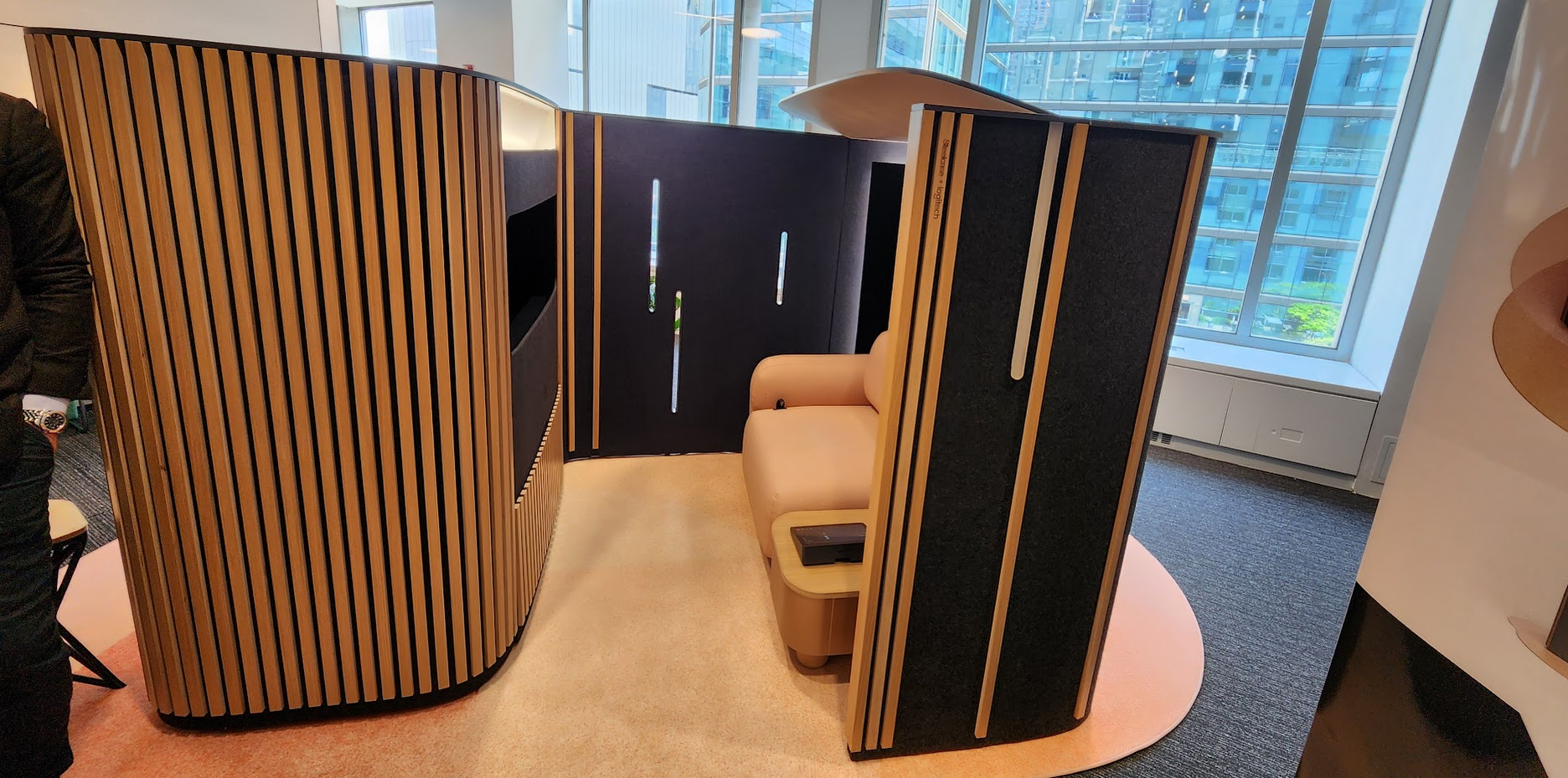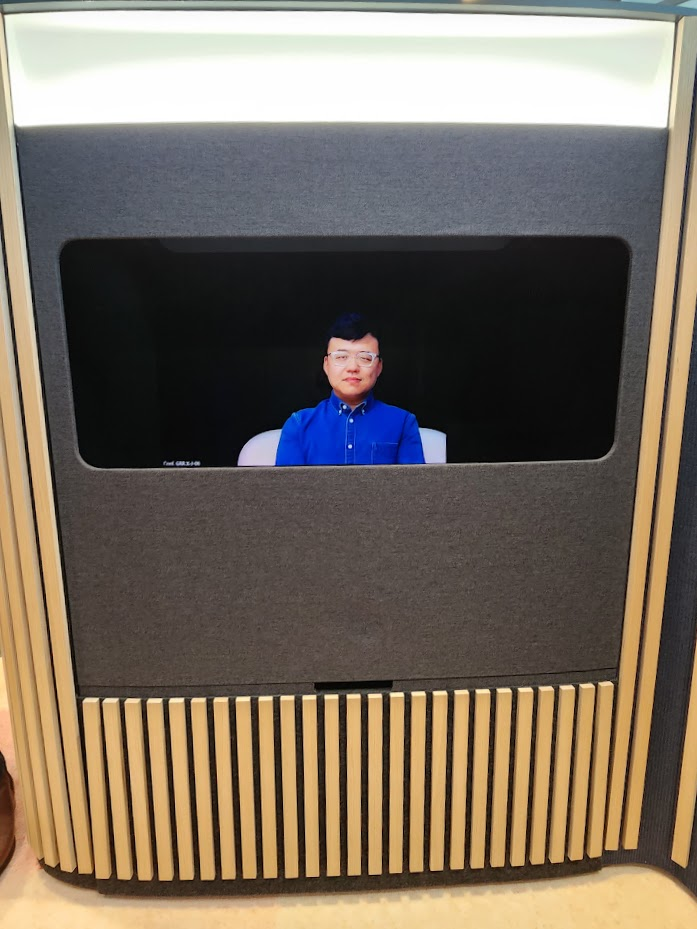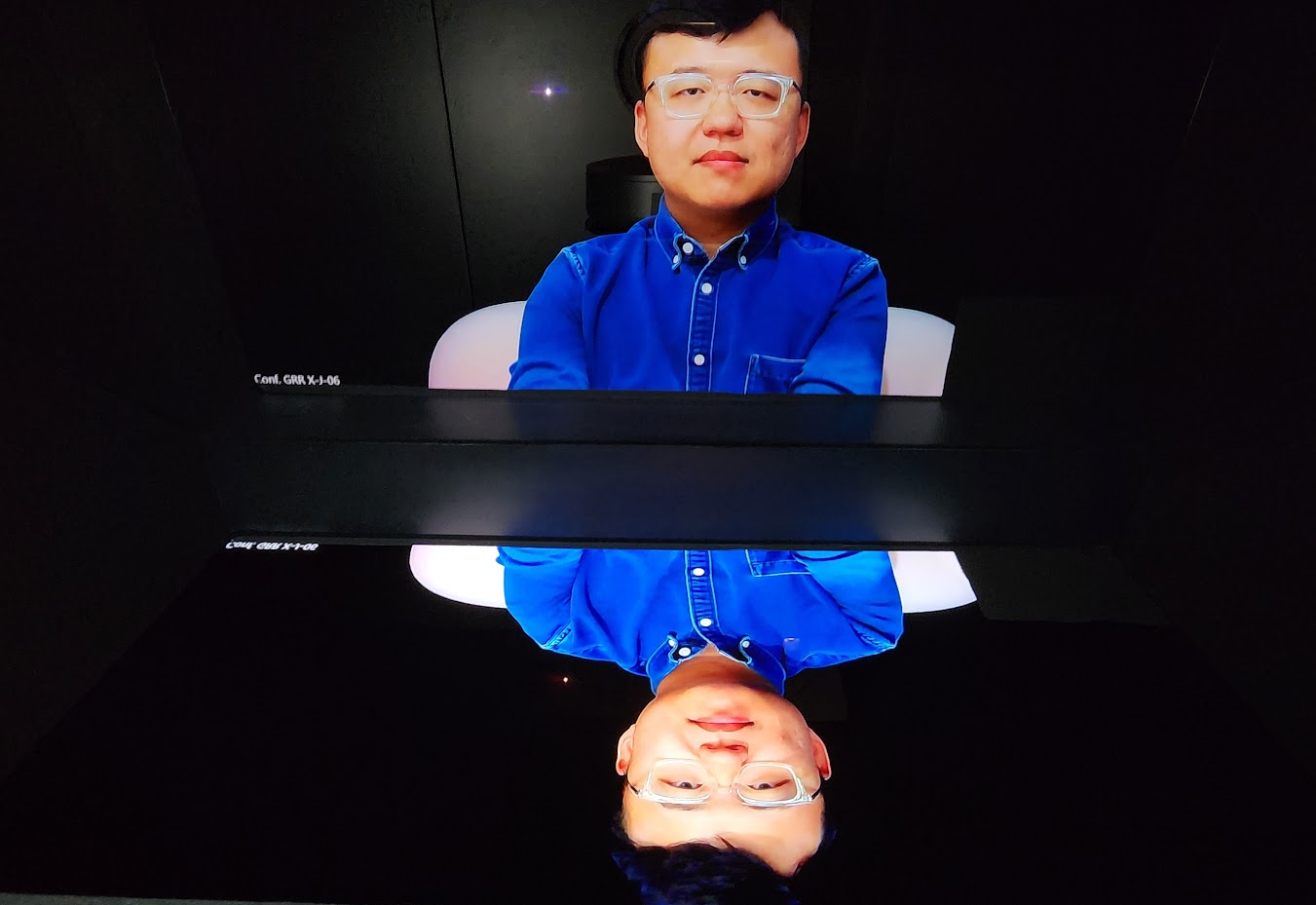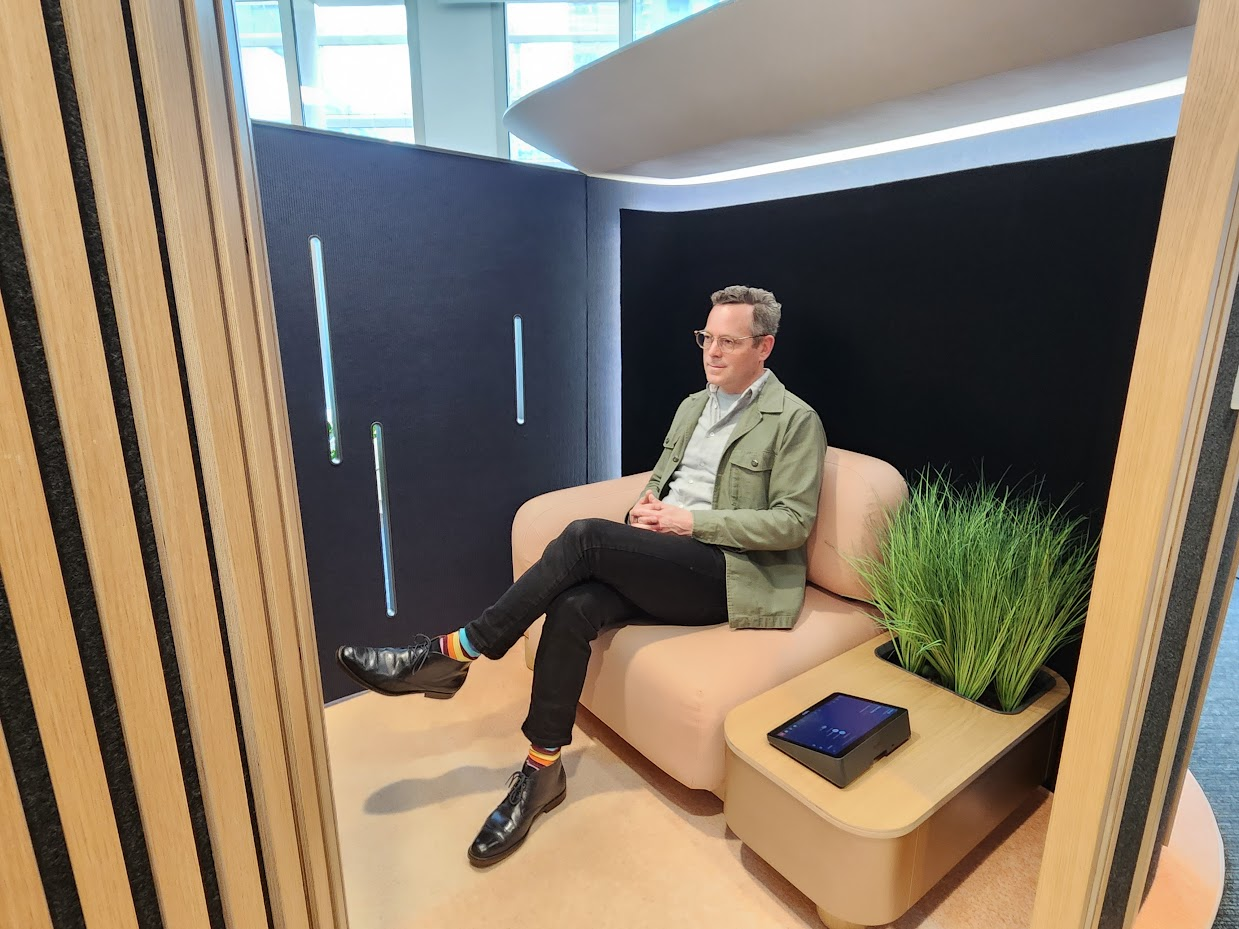
Remember that whole thing about “Zoom fatigue” from the middle of the pandemic? The widespread exhaustion with video conferencing, the kids skipping virtual school because it was just so darn tiring, the countless hours spent staring at Brady-Bunch grids of heads on your tiny laptop screen?
At last … at long, long last, someone’s solved video conferencing.
Last week at the Steelcase WorkLife Center Showcase in New York City, Logitech and Steelcase put on display a majestically simple and elegant solution to video conferencing. Called Project Ghost, it’s an all-in-one video pod approximately five and a half feet tall and maybe 15 feet long. At one end is an inviting couch, with a side table that holds a conference control tablet. Across from the couch is a movie theater of sorts – and that’s where the ghostly magic happens.
Face to face with a ghost
Project Ghost, Logitech’s reps explained to me, can “delaminate” whoever you’re talking to from their background. The screen on which they are projected disappears, leaving only the image of the person you’re talking to in the viewable area against a pitch black background, an experience that feels like seeing a real person who isn’t actually there — like a ghost.
I sat down on Project Ghost’s couch, a felted, firm loveseat with all the comfort and ergonomics you’d expect from Steelcase designers. In from of me, housed behind a movie screen, was another human being. Well, the image of a human, of course, but the 15 minutes or so we spent talking felt like a real conversation, rather than me staring at a computer screen.
One reason for that is the position of the screen in Project Ghost; it’s about a foot behind a gray felt frame, and the distance and scale made the other participant mostly life-sized and normal looking. Also, in most videoconferences, there’s a small picture of you tucked into the corner. Be honest, it’s distracting, isn’t it? Project Ghost does away with that, and you find yourself perfectly meeting the gaze of another person … like two human beings, having a chat.

Project Ghost is based around off the shelf hardware from Logitech, the Rally Plus system and Logitech’s “compute” appliance, RoomMate. The latter device is a $1,000 gizmo that runs a custom operating system and allows you to easily deploy Microsoft Teams Rooms on Android, Zoom Rooms Appliances, RingCentral, and other video conferencing services. It includes an interface pad, which Steelcase left conveniently at arm’s reach, on a low conference table just in front of some integrated grasses.
Really. Project Ghost incorporates some nature too, it seems.
Rally Plus on the other hand is a set of cameras and speakers for video conferencing. In Project Ghost, the camera capturing you is directly behind the image you see, which is actually reflected up from a screen that sits about at your knees.
If you lean in really close, and angle your body just right, you can barely make out the camera in the dark space. And if you’re super tall, or if you were to lean way, way in, you’d see the mirror image of your fellow conference participant. But seated on the couch, four or so feet away, the illusion becomes real, and there’s just you and another person, having a chat.

Yes, you can afford it
The Future offices in midtown Manhattan have a row of tiny phonebooths that I cram into regularly for calls, and we’d be hard pressed to shoehorn a system of this scale into our footprint.
But Logitech told me that Project Ghost is designed to be modular, and the two companies already have plans to make scaled up and down versions of the system to fit phonebooths and existing conference rooms.
If you’re a YouTuber, for example, you probably don’t have space for a module like the one I tried out. But you could sacrifice a corner of your office for something smaller.
While Project Ghost is really still in the concept stage, it’s darn close to completion. Logitech and Steelcase believe the system will be on sale this fall at about $20K, which feels reasonable for about $4,000 worth of advanced A/V tech and fancy furniture. But really, can you put a price tag on human interaction?

- Check out the best online collaboration tools around today






